The integration between furniture and appliances allows to better meet the needs of consumers who want harmonious spaces in terms of aesthetics and functionality. Standard solutions are less and less, while the importance attributed to customization increases
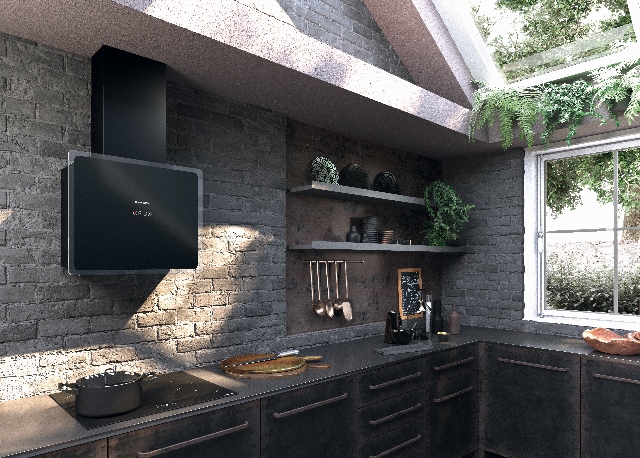
by Elena Corti
The design model of kitchen characterized by standard solutions is increasingly a memory of the past. Nowadays this environment is a space that transforms itself according to the different needs of consumers and that sees a greater integration between furniture and home appliances. This is also demonstrated by the opinions of the companies we interviewed in a survey, that we publish in two parts on this issue and on the next one. Kitchen is increasingly the focus of domestic life and the need to customize this space is strongly felt by modern consumers. Integrating furniture and household appliances thus becomes essential to create a homogeneous environment that meets the needs of those who live there. In fact, integration is not only in terms of aesthetics but also in terms of functionality, designing well-organized spaces where it is pleasant and easy to move. Let us listen, so, the opinions of home appliance manufacturers on current (and future) trends and on factors that can allow a true integration into the kitchen environment.
| Questions to the companies 1 We are frequently talking about the integration between home appliances and kitchen furniture: in your opinion, is this a trend that will become increasingly important in the near future? 2 Do you believe that the diffusion in the kitchen of an increasing number of home appliances, new types of products and appliances with non-traditional dimensions will push to rethink the design of the kitchen? 3 In your opinion, what are the factors that allow a true integration between home appliances and kitchen furniture to create a homogeneous space? |

2 Today we have the opportunity to enhance the experience in the kitchen thanks to new technologies that support the needs of the “cook” and guarantee optimal cooking results. The availability of alternative cooking (gas, electric, microwave, steam, induction, combined …), once exclusive of professional catering, today allows everyone to create the perfect kitchen for any needs. The design of the kitchen environment, in fact, is changing: flexibility and customization are the new buzzwords. On the basis of food, nutritional, time and taste preferences, it is possible to make everyone own kitchen with the right mix of technology and functionality.
3 The factors that allow a true integration are, in my opinion, performance and style. Performances must be uncompromised and the coordinated style of furniture and appliances must embrace the personality of those who live in the house. Bertazzoni offers three different styles of built-in products: Professional Series, characterized by steel and design knobs for those who love a functional style; Modern Series, full touch, distinguished by black crystal and refined metals for those who love clean and sophisticated lines; Heritage Series, with a style inspired by the wood burning stoves of the early twentieth century, with enamel finishes and chrome or coppery ornaments, for those who love a more traditional and timeless taste. For each series are available – in strictly coordinated aesthetics – hobs, traditional and special ovens, free-standing kitchens, hoods, refrigerators and dishwashers.
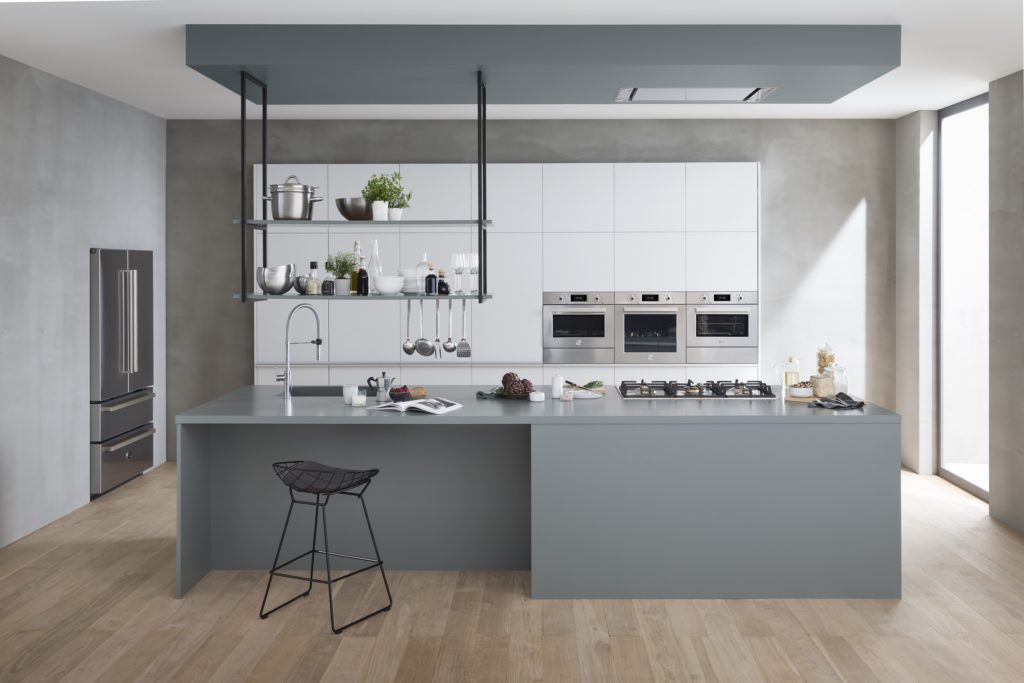

1 Definitely. Life in the city is becoming ever more attractive to not only single people but also families and senior citizens worldwide. This means that cities are becoming cramped. The combination of less space and rising costs leads to a need for creative solutions. Inventiveness is required. One of the most important questions will be how space can be cleverly used in often open-plan homes. How can you create a clever and chic design that also offers great technical efficiency in just a few square metres? The result: the trend that we have set remains unbroken as Bora offers great freedom for even small areas and has established itself as a magnet for the brand conscious. I believe we are a long way from reaching the peak of our market development.
2 The kitchen is more of a lifestyle than ever and with this, more individual than ever too. Never before has design been so important. More will to experiment and try new things characterises the consumers. I experience this during almost every customer consultation nowadays. Standard solutions are a thing of the past; people want the extraordinary, even if they only have a small budget. From a standing start, we have succeeded in winning over thousands of people with our concept of a downdraft cooktop extractor and want to remain pioneering with our developments.
3 Individuality and freedom in terms of kitchen design: this is a development that is influencing the entire industry. Kitchens are increasingly becoming the focal point of people’s homes and lives. As a result, consumers have ever higher demands when it comes to planning and design. Bora connects directly with what customers want: freedom when designing their kitchen and a clear view in the living space when cooking – with maximum effectiveness, minimum background noise and best materials. This is particularly impressive when cooking in an open-plan kitchen with friends or family. The need for simple solutions in even complicated conditions will become ever more important. Despite all the technology, even demanding customers love to keep things simple. And anyone who sees the Bora extractors working for the first time is generally amazed and thinks: “Wow, it really works. I get it!” I think this is the reason for our global success. Only those who keep up with the times can achieve long-term success.
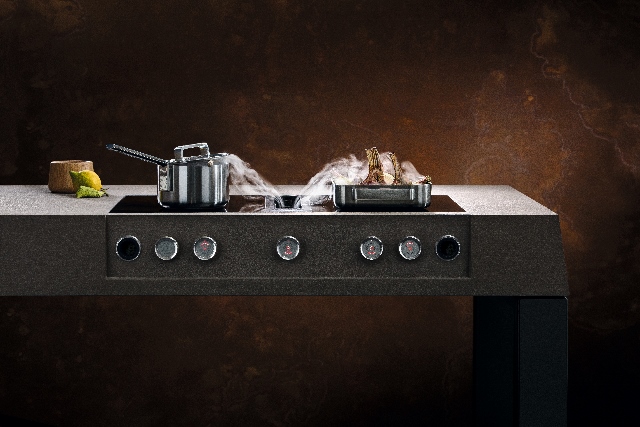

1 The perfect integration both aesthetic and functional between home appliances and kitchen furniture is one of the first criteria of choice for consumers who are increasingly looking for integrated and aligned solutions from an aesthetic point of view. The opening of the kitchen to the living environment has made this need even more frequent. Ensuring this combination will not only be important but will represent the winning choice of those brands that want to be protagonists in consumer homes. Elica is constantly looking for solutions that are able to harmoniously complete the outfit of the kitchen and does this by offering shapes, finishes and materials that are always aligned with the stylistic trends of the furniture world, but also by creating solutions that functionally adapt to the environment. An example is the Haiku hood that, in addition to offering versatility in the finishes, is able to adapt to the depth of the wall unit to ensure maximum continuity in the kitchen lines.
2 Consumers inspire every day the producers of home appliances and kitchen furniture to rethink the spaces so that there is always the right answer to their needs. On the one hand we see a constant demand for greater capacity and therefore, for example, hobs that become increasingly larger and more flexible. On the other hand, environments are reduced in size and, as a consequence, the need to provide multi-tasking and integrated solutions increases. Every day Elica invests to develop products that best meet this need. An example is the range of NikolaTesla induction hobs which, in addition to offering an 83 cm cooking surface and flexible cooking zones, integrates the suction element, freeing the space generally occupied by the hood.
3 The winning factor is the wideness of the range and its ability to adapt to any environment.
In order to better respond to the needs of consumers, those who design kitchen furniture offer a great variety of functional solutions, colors and finishes. On the other hand, also those who design home appliances must be able to adapt to this level of complexity, proposing a wide range in terms of design, dimensions, finishes, colors and installation systems.
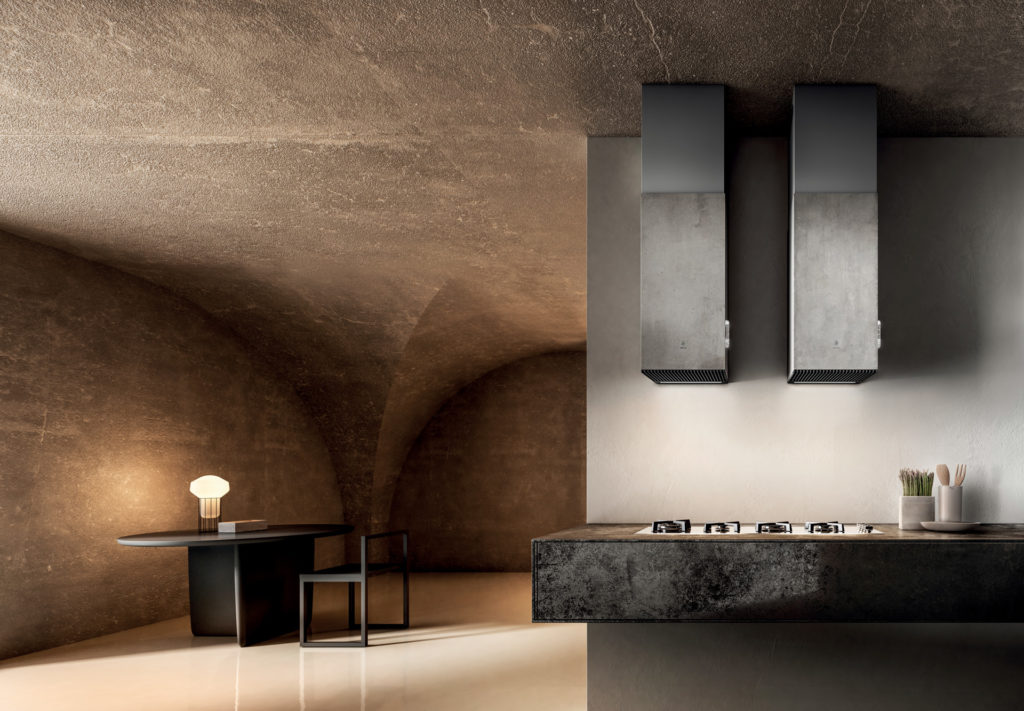

2 The current way of designing the kitchen environment is the result of a process started some time ago. Kitchen has become increasingly protagonist thanks to larger spaces and island cooking zones. Faber meets these consumer needs for example with a model like Chloé XL, available both in island and wall-mounted version, and perfect for furnishing large spaces with style and functionality. This product is made of cast iron and opaque country gray, two colors that recall the latest interior design trends and which highlight its distinctive elements, such as the knob controls, the particular round knobs. Design, however, allows to make the most even of the smallest spaces, for example with the Glam-Fit model, featuring a contemporary and minimal design. In addition to the possibility of choosing the white or black version, this product is ideal for smart kitchens: Glam-Fit, in fact, is the first completely flat and ultra-thin (just 15 cm) vertical glass hood, also available in the 55 cm “small” version.
3 We can identify two factors: design and technology. From Ilma, passing through Onyx-C, up to Galileo (last arrival at Faber), all our products are conceived to add value to the kitchen in terms of style and elegance. With Galileo, for example, the choice of the black color for the plate and the completely flush cast iron grid on the glass was intended to embellish the cooking area and make it truly unique. At the same time, designing in terms of integration makes it possible to maximize products also from the technology point of view. As mentioned, Galileo is designed in terms of space and performance to give the maximum, being inserted in its furniture. A model like Ilma hood, equipped with the Steam Off System technology (which thanks to controlled air jets released in helical form and with variable geometry creates two vortices to manage the rising of fumes and steam), allows to preserve the furniture in which the hood is inserted and at the same time to improve the quality of the air – and therefore of life – in the home environment.
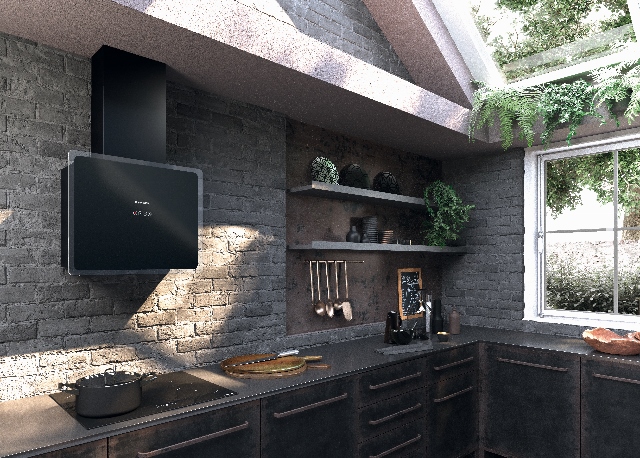
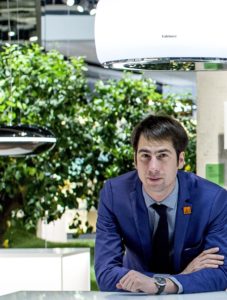
1 Solutions integrated into the furniture are today an important part of the market, being functional products that keep the aesthetics of the kitchen clean. Often people tend to trivialize the built-in product, underestimating the importance of the choice of this appliance, although hidden. Falmec has worked hard in this regard to offer the market unique and distinctive technological solutions in this category of products: just think of models such as the NRS Built-in Group of the Silence collection, which reduces noise by almost 90%; the E.ion Built-in Group, which allows to eliminate odors and, at the same time, remove viruses and bacteria; other technologies such as No-Drop System (present in the Virgola No-Drop model) that prevents the phenomenon of dripping and condensation and finally Green Tech, for those who want to save energy. Recently solutions that combine cooking and extraction have been added, designed to integrate completely into the worktop without obstacles or other thicknesses: models such as Sintesi, Quantum or Modula guarantee a minimal appeal and high performance in both suction and filter mode, thanks to the exclusive Falmec Carbon.Zeo technology.
2 I believe that nowadays there is no longer a single way of designing the kitchen, but multiple interpretations of the same by architects and designers. Despite this, productive and managerial logics remain, that undoubtedly must consider standard and modular elements, that will continue to occupy and influence a large part of the market. In the range of hoods, adaptability and flexibility in satisfying different requests has always been a key element of differentiation for Falmec, that we continue to pursue offering our customers various solutions suitable to satisfy every technical and aesthetic need.
3 The key factor is to think of appliance and kitchen as a whole and not as separate elements. A whole in which all the functions of the appliance are coherent and in harmony with the environment in which it is inserted. To guarantee a harmonious kitchen environment, Falmec is concentrating on linear shapes that determine transversal objects for different spaces and equipped with materials and technologies that allow them to adapt to multiple contexts. An example in this sense is Dynamic LED Light, which offers the possibility of modulating the light intensity of the hood harmonizing it with that of the kitchen in which it is inserted.
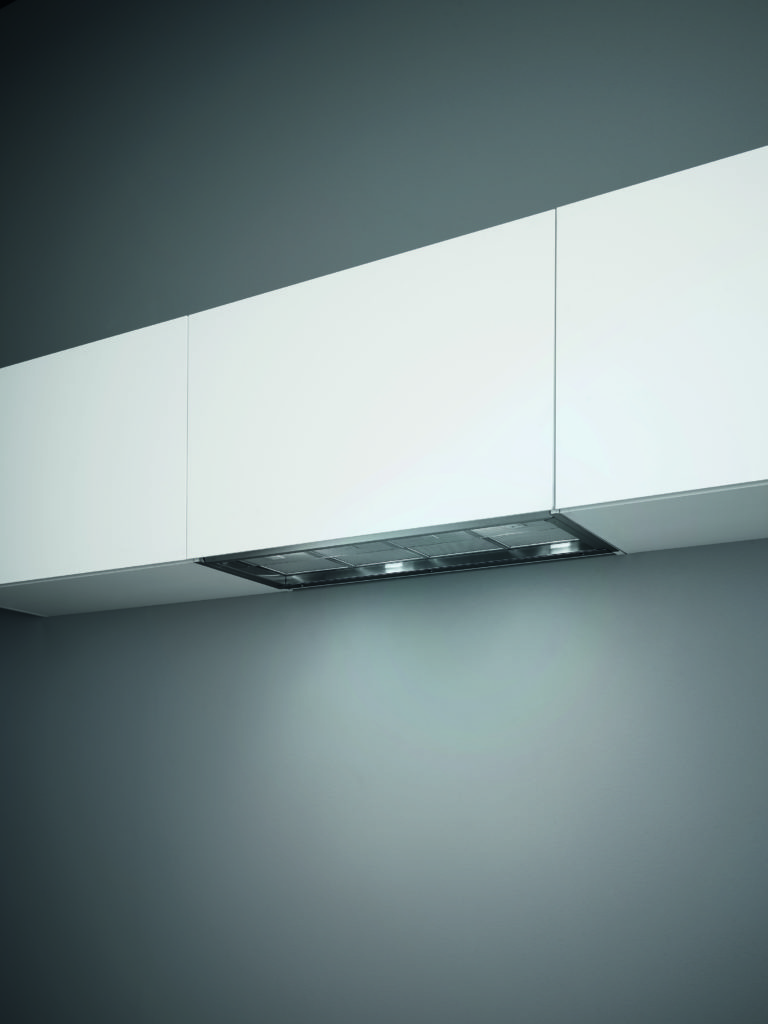

1 Integration will have increasingly importance both for aesthetic and stylistic aspects but even more for the functional ones. The kitchen environment is a dynamic space, in which ergonomics and efficiency are fundamental: design alone is not enough. Our appliances are designed for functional integration with kitchen cabinets while maintaining a personality that distinguishes them from the user point of view.
2 There are different habits and cultures in the use of the kitchen environment, obviously linked to the daily experience of each user. As far as we are concerned, we are careful to the different modulations of use of our appliances both for those who prefer an efficient and quick use, and for those who love to devote themselves to prepare challenging recipes that give satisfaction in their fulfillment. The introduction of appliances such as blast chillers and vacuum drawers leads to a revision of the overall design of the kitchen, just as in the past it happened with the birth of combinations among different cooking appliances (standard ovens, compact, steam and microwaves), with the introduction of coffee machines and wine cellars. As far as we are concerned, we have always been offering products with larger dimensions than the standard, such as 75 cm and 90 cm large-capacity ovens, cooking machines such as Sofia models that can be integrated into kitchen cabinets, hobs of more than 100 cm in width, hoods with large dimensions; all this to satisfy customers in love with cooking and who require equipment on the border between domestic and professional.
3 What allows true integration is the ongoing dialogue between those who design appliances and those who make kitchen furniture. Neither of the two category lives on its own life and therefore they must grow, change and satisfy users jointly; a combination not always implemented, but which would instead give everyone greater results in aesthetic, dimensional and functional integration. Home appliances are the beating heart of the kitchen, but they need a pleasant, functional and ergonomic space to be fully experienced: without collaboration these two worlds can only collide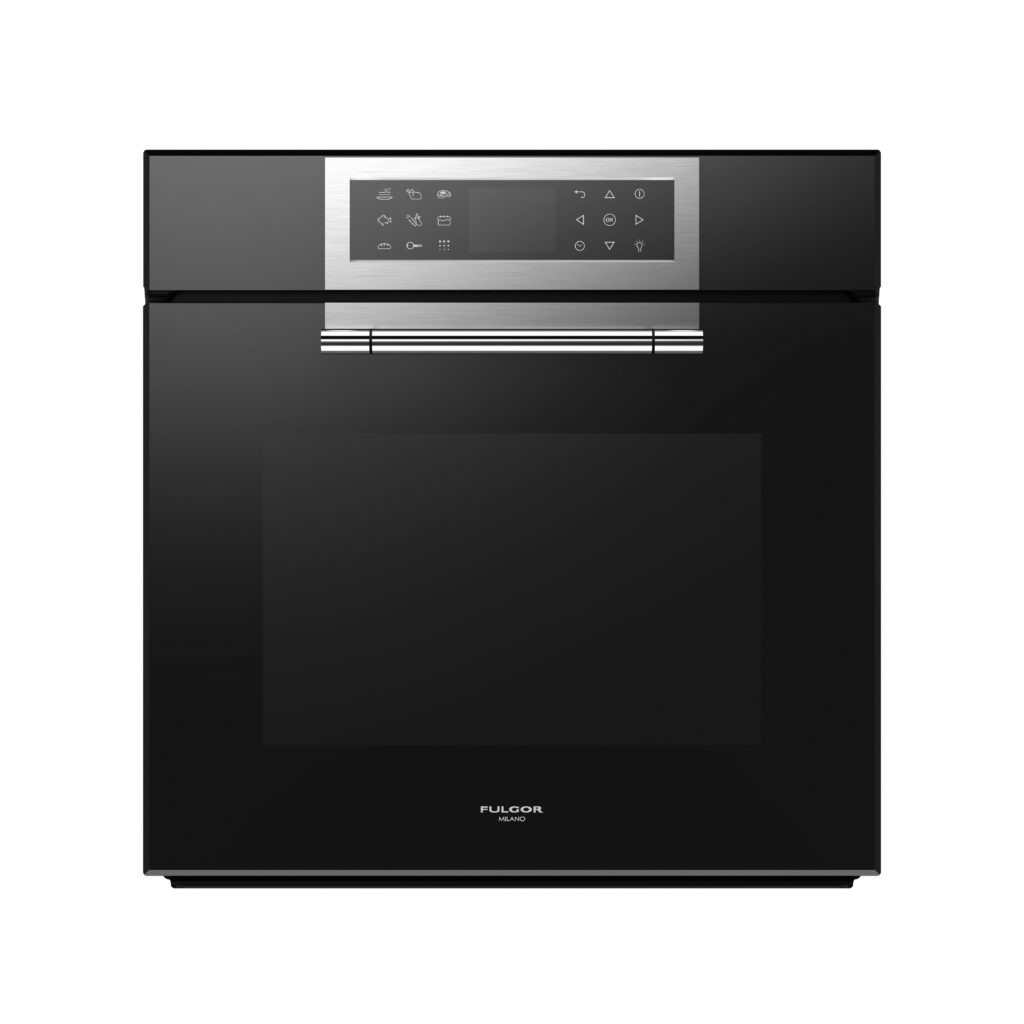
| Integrating hood and kitchen Combining the hood with the materials and colors of the kitchen is a way to create a complete integration between the appliance and the furniture, to obtain an aesthetically pleasing and homogeneous environment. To meet this need, Baraldi proposes the One hood that belongs to the Full Color series. This product is characterized by a technology that, thanks to nanotech inks, allows to print on the metal any image or decoration you want, in a durable and permanent way. 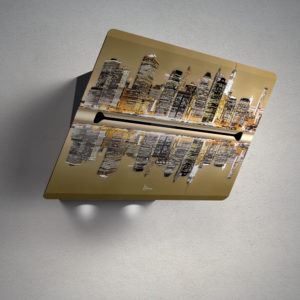 |



